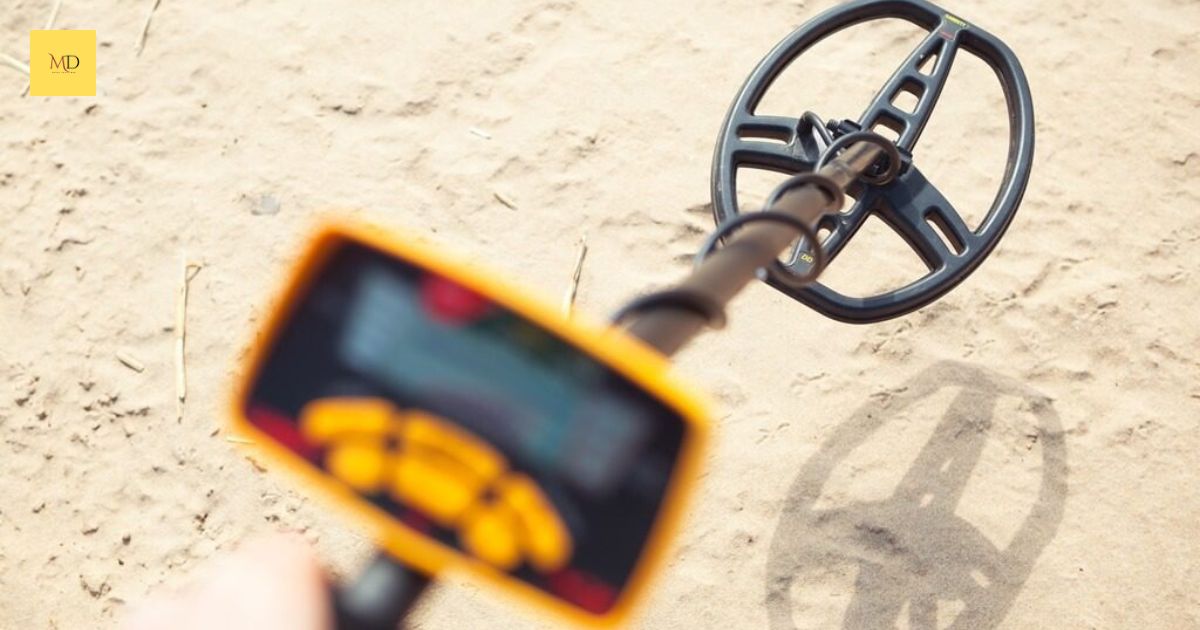A metal detector is a device that finds metal objects. It emits electromagnetic fields to detect metal nearby. It alerts the user with a sound or light when metal is found. Used in various fields like security, archaeology, and hobbyist treasure hunting.
Discover the hidden secrets beneath the surface with the power of metal detectors. Uncover buried treasures or ensure safety with a simple sweep. Can lead be detected by a metal detector? Let’s find out and unlock a world of possibilities with this advanced technology.
Lead can be detected by most metal detectors due to its metallic properties. It might not be as easily picked up as other metals due to its low conductivity. Specialized detectors or those with specific settings for sensitivity might be needed for accurate lead detection.
Understanding Metal Detection
Metal detection involves the use of devices to identify metallic objects in various environments. These devices emit electromagnetic fields and sense changes in the field caused by the presence of metal. Understanding metal detection means comprehending the basic principles that govern this process. It’s about recognizing how different metals impact the field and how sensitivity settings affect the detection. Factors such as conductivity, size, and shape play a crucial role in determining the detectability of a metal object.
Grasping the essentials of metal detection involves knowing the capabilities and limitations of these devices. Different types of metals react uniquely to detectors, and understanding these variations helps in accurately interpreting the signals. This knowledge is fundamental for diverse fields, including security, archaeology, and industrial applications, where metal detection ensures safety, aids in discovering historical artifacts, and assists in quality control processes.
Metal Detection Basics
Metal detection is the process of identifying metallic objects using specialized devices known as metal detectors. These tools emit electromagnetic fields that interact with metal, causing a disturbance in the field, which is then detected by the device. The basic principle involves the generation of a magnetic field and the analysis of disruptions caused by metal objects within its range. When a metal object comes in proximity to the detector, it creates an eddy current or a change in the magnetic field, prompting an alert, such as a sound or a visual signal, to notify the user of the detected metal.
Metal detectors typically consist of a control box, a shaft, and a coil. The control box houses the circuitry, controls, speaker, and batteries, while the shaft connects the control box to the coil. The coil, often in the form of a circular disk, emits the electromagnetic field and receives signals back, functioning as the sensing component. This basic setup enables the device to identify and signal the presence of metal, making it an invaluable tool in various fields such as security, archaeology, and resource prospecting.
Properties Affecting Detection
The ability of a metal detector to spot various metals relies on several crucial properties. Conductivity stands out as a significant factor influencing detection. Metals like copper or gold, with high conductivity, are easily detected as they conduct electricity more effectively. On the other hand, metals like lead, with lower conductivity, pose a challenge for standard metal detectors. Additionally, the size and shape of the metal object play a role in detection. Larger or more substantial pieces are generally easier to detect due to their increased surface area.
The composition of the surrounding environment impacts detection. Soil composition, mineral content, and other electromagnetic interferences in the area can affect a metal detector’s accuracy. Understanding these properties helps in optimizing metal detector settings for improved precision in detecting various metals, including those with lower conductivity like lead.
Characteristics of Lead

Lead is a heavy, dense, and malleable metal with a bluish-white hue. It’s known for its low melting point and high resistance to corrosion, making it valuable in various industries. However, its conductivity is relatively poor compared to other metals, which can pose challenges for detection by standard metal detectors. Its unique properties, including low reactivity and durability, also contribute to its widespread use, particularly in construction, batteries, and ammunition.
Due to its low conductivity, lead might not trigger typical metal detectors as readily as other metals. This makes its detection more complex, requiring specialized equipment or refined settings to accurately pinpoint lead-containing objects. Understanding these distinct characteristics of lead is crucial for ensuring effective detection, particularly in scenarios where lead presence must be identified for safety, environmental, or industrial reasons.
Conductivity and Detection
Conductivity plays a crucial role in metal detection, influencing a detector’s ability to identify different metals. Metals vary in their conductivity levels—some conduct electricity more efficiently than others. For instance, metals like copper and silver have high conductivity, making them easier to detect with standard metal detectors. However, metals like lead, due to their lower conductivity, pose a challenge in detection.
Their reduced ability to conduct electrical currents means that standard detectors might not pick them up as easily or accurately. Specialized detectors or adjustments in sensitivity are often necessary to enhance the chances of detecting lower-conductivity metals like lead. Understanding conductivity helps in comprehending why certain metals might be more challenging to detect than others. It guides the development of more sophisticated detectors, aiding in the improvement of metal detection technology, especially in identifying metals with lower conductivity such as lead.
Challenges in Lead Detection
Detecting lead poses several challenges due to its low conductivity compared to other metals. This property makes it less responsive to standard metal detectors, requiring specialized equipment or adjusted settings for accurate identification. Moreover, lead’s presence in various environments—such as soil or complex structures—further complicates detection. Its tendency to blend with surrounding materials can hinder precise identification, necessitating advanced techniques for reliable detection.
The small size of certain lead objects can make them more elusive to standard metal detectors, as they may not trigger the usual detection mechanisms. This presents a challenge in distinguishing lead from other non-metallic substances, requiring a higher level of sensitivity and discrimination in the detection process. Overcoming these challenges involves the development of more sensitive detectors and the implementation of specific methodologies to accurately identify lead in diverse settings.
FAQ’s
What metals Cannot be detected by a metal detector?
Non-ferrous metals like aluminum, copper, and brass are more challenging to detect compared to ferrous metals due to their lower magnetic properties.
Can metal detectors detect lead bullets?
Yes, metal detectors can detect lead bullets due to their metallic composition.
Can a magnet detect lead?
No, a magnet cannot detect lead as lead is not magnetic.
Conclusion
The ability to detect lead by a metal detector remains a complex endeavor due to lead’s unique properties. Its low conductivity and non-magnetic nature pose significant challenges for standard metal detectors. While these devices can detect some metals based on conductivity and magnetic characteristics, lead’s specific properties make it less responsive to traditional detection methods.
Efforts to improve lead detection continue through advancements in technology and the development of more sensitive and targeted detectors. Innovations in detection methodologies are essential to address the challenges posed by lead’s elusive nature. Specialized detectors equipped with specific settings for lead detection, coupled with ongoing research and innovation, aim to enhance the accuracy and efficiency of identifying lead in various settings, from industrial and environmental contexts to hobbyist treasure hunting.











